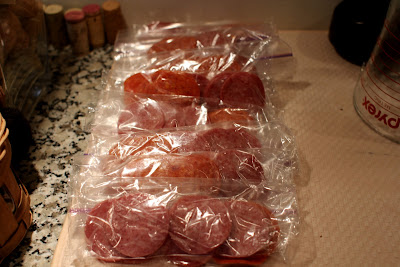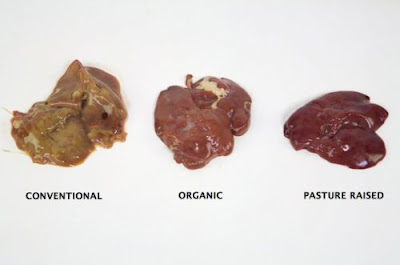Name:
Jon S.
Age:
34
Height:
6'2
Highest
Weight and when: 300lbs January 1st, 2011
Weight
now: 225lbs as of January 29th, 2012
Q:
Give us an idea of your background, specifically related to fitness and
eating.
A: I
was a lean 185lbs as a senior in high school. I played football for
school but my friends and I lived to play basketball. We'd run full
court 5-on-5 for 6+ hours a day at least three times a week. Despite my
mother’s best efforts, I ate like crap but it didn't matter at that age
and activity level. Even my first few years in the military I ate
everything in sight and nothing changed. Then I woke up one morning
fifteen years later and I was fat. That's what happens when your
activity level drops to zero and you continue to eat like a care-free
teenager.
Q:
When did you change your diet and what made you change?
A: A
good friend of mine was suffering from horrible stomach problems. It was
recommended that he stop eating gluten, so he did and lost 30lbs in six
weeks. Zero exercise. It was about a month or two later that I got into
Crossfit and learned of the Paleo system. The brutal, straight-forward
logic of Paleo backed by the results of eliminating grains that I
witnessed firsthand and I was sold. Sometime in August, 2011 is when
Katie and I really went all-in with the Paleo system. We went through
the kitchen and threw away all the crap we had. The reason we
even looked into being more fit is because we just flat-out got tired of
being overweight and feeling like crap. I was actually starting to
develop moderate heath issues. We made a promise to each other that
thing were going to change in 2011.
 |
| Outdoor adventure WOD (Oct. 2011) |
Q:
What benefits have you seen from changing your food?
A:
Everything! My mood is more balanced, my energy level is higher, the
fatigue of shift work is less substantial. I eat better so I'm actually
eating less. I'm probably consuming a little less than half the volume
of food I was previously. The 300lb guy in the mirror that used to
disgust me is now a 225lb guy that I feel good about. Yes, the food is
more expensive but I’m eating less of it so the cost difference is
effectively zero. Consider this: a Primo’s hoagie is about $8-10. A full
pound of grass fed bison meat is about $9. If I eat a half pound of
bison and two avocados for lunch, I spend about $4.50 for meat and $3
for fat. Either way you slice it, I eat better and cheaper.
Q:
What has been the hardest thing about eating clean/paleo?
A:
Truly, the most difficult part of going Paleo is the elimination of
sugar. Those first three days reminded me of what it was like when I
quit smoking ~5 years ago. I had headaches and was irritable, but you
know what? It passed. Once you defeat your sugar addiction, and yes it
is an addiction, the next thing is the convenience foods. Sandwiches are
the devil. Everyone at work orders hoagies for lunch and I microwave my
grass fed bison roast. There is a bit of ridicule that comes with
"eating outside the box" but I take solace in knowing I can kill the
naysayers with my bare hands.
 |
| Lean and Mean at Barbells for Boobs (Nov. 2011) |
Q: You
changed your diet at the same time you started Crossfit. Do you think
one has helped the other?
A:
Crossfit introduced me to Robb Wolf, Loren Cordain and the Paleo
system. From a strictly nutritional perspective, I would still be eating
the Standard American Diet (S.A.D.) and be much less healthy. Beyond
that, the community we have at CF-KoP is absolutely amazing. It's hard
to fall off the wagon when you have both awesome coaches leading you and
incredible athletes around you. I tell people all the time that
Crossfit isn't just an expensive gym; it's fun, it's a community and
it's my own personal fitness support group.
Q:
What advice do you have for those who are looking to change their food
habits?
A: The
first step is making the commitment to yourself. I'm lucky because
Katie is right here with me through all of this. It's hard to fall off
the horse when you have a partner that is right there alongside you the
whole time. It's not easy and there are moments of weakness, so having a
strong support system is vital.
Q:
What are your nutrition and/or fitness goals?
A: For
nutrition, I'm just going to keep eating this way. This isn't some
gimmick that I can just stop. My heartburn is entirely gone. I'm not
gassy, bloated and fatigued all the time. My doctor laughs with joy when
she sees my blood work when she used to express genuine concern. My
quality of life is better now that it has ever been. As far as fitness
goes, I just want more. I want to perform more work over a shorter
period of time. I want to lift heavier weight and run/row faster,
further and longer. I’m going to be posting some big numbers by Festivus
2012.
Q:
Anything else you'd like to add?
A: My
personal success is a testament to our incredible community. I wouldn’t
have been able to do this without all of you, especially Katie V, and
for that, I thank you.
 |
| Celebrating Festivus at KoP (Dec 2011) |
Editor's Note: Jon has been a very active member of CrossFit King of Prussia, but I wanted to highlight the fact that changing his NUTRITION resulted in significant change prior to CrossFit. In other words, CrossFit is a great fitness program and can help you become stronger, faster, etc. but if you truly want to change how you look and feel, nutrition is going to have a bigger impact than any exercise program. Jon is a great example of persistence, dedication, and the pursuit of health.
If you have any questions for Jon, leave them in the
comments.
For more on the basics of eating clean and establishing good habits, check out my previous blog post Nutrition, Fitness, and Health 101.








































